Decorating
Pro Panel: How to Choose and Hang Curtains in a Bay Window
UK designers reveal the rules for selecting curtains, poles, tracks, fabric and pleats in this practical guide
Dressing a bay window can be a tricky proposition – sometimes all those angles can feel like a real challenge. But are there right and wrong ways to use curtains in these openings? Almost always, say the experts. Here, three of them share their tips and experience. Houzz spoke to UK-based designers James Fearn of Poles & Blinds, Matthew Connellan of Revival by Design, and Judith Strong of Judith Strong Design to get the lowdown.
Can you get curtain poles for a bay window?
Yes, says Strong, who favours a metal pole with finials, bent specially to fit.
“There are a few on the market that can be bent to the shape of the bay,” says Connellan. “The type that have the track inside the pole [where the gliders peep out of the bottom for the hooks to be inserted] can be a nice look.”
“Metal curtain poles are a popular choice and look fantastic when you match the colour with existing metal furniture in the room, light switches, door handles, etc,” says Fearn. “There are very few wooden bay window curtain poles available, as the solution to getting curtains around the corners is either expensive, or – to my mind – not good enough.”
Looking for window treatments? Find a curtain, blind and shutter specialist in your area on Houzz
Yes, says Strong, who favours a metal pole with finials, bent specially to fit.
“There are a few on the market that can be bent to the shape of the bay,” says Connellan. “The type that have the track inside the pole [where the gliders peep out of the bottom for the hooks to be inserted] can be a nice look.”
“Metal curtain poles are a popular choice and look fantastic when you match the colour with existing metal furniture in the room, light switches, door handles, etc,” says Fearn. “There are very few wooden bay window curtain poles available, as the solution to getting curtains around the corners is either expensive, or – to my mind – not good enough.”
Looking for window treatments? Find a curtain, blind and shutter specialist in your area on Houzz
Is manual or a cord pull better for bay windows?
Generally, tracks can have a cord pull, whereas poles tend to be hand-drawn, though if you choose a pole with a track inside, you can then have a cord.
Corded always trumps manual for Strong.
Connellan agrees. “It puts much less stress on the tracks when opening and closing the curtains,” he says. “And if you have a very large bay window – we’re currently installing a corded track in a four-metre-wide bay – it’s much easier to stand at one side and pull the cords to open or close the curtains. It also keeps them clean and in better shape.”
Fearn adds a word of warning, though. “Cording mechanisms can wear out over time, especially if you’re hanging heavy-weight curtains,” he says. He advises ensuring your choice of track will happily support the weight of your curtains.”
“If budget allows, I’d always go for a motorised curtain track – one click, zero effort,” says Connellan. “With no cords, it’s safer [for small children], too.” He mentions there are even options for designs that can be controlled via an app on your phone or set to work automatically according to the quality of light.
Generally, tracks can have a cord pull, whereas poles tend to be hand-drawn, though if you choose a pole with a track inside, you can then have a cord.
Corded always trumps manual for Strong.
Connellan agrees. “It puts much less stress on the tracks when opening and closing the curtains,” he says. “And if you have a very large bay window – we’re currently installing a corded track in a four-metre-wide bay – it’s much easier to stand at one side and pull the cords to open or close the curtains. It also keeps them clean and in better shape.”
Fearn adds a word of warning, though. “Cording mechanisms can wear out over time, especially if you’re hanging heavy-weight curtains,” he says. He advises ensuring your choice of track will happily support the weight of your curtains.”
“If budget allows, I’d always go for a motorised curtain track – one click, zero effort,” says Connellan. “With no cords, it’s safer [for small children], too.” He mentions there are even options for designs that can be controlled via an app on your phone or set to work automatically according to the quality of light.
How high should the curtain track or pole be hung?
“Usually, the best area to fit a pole or track is midway between the top of the window opening and the ceiling coving,” says Fearn. “A minimum height to consider would be 10 to 15 centimetres above the window opening.”
Connellan advises fixing the track to the ceiling within the bay if at all possible, with curtains hanging in front of the sill and all the way to the floor. “We think that gives the best overall look and it allows for the windowsill to be used no matter whether the curtains are open or closed,” he says.
Fearn agrees that fixing a track to the ceiling is a good choice if you have little room at the top of the window.
He adds that he’d always recommend curtains fall to the floor where possible, though he understands the challenge with heaters and vents. “If a [heater] is a problem,” he says, “consider having blinds [paired] with dress curtains, which can be a practical and aesthetically pleasing option.”
“Usually, the best area to fit a pole or track is midway between the top of the window opening and the ceiling coving,” says Fearn. “A minimum height to consider would be 10 to 15 centimetres above the window opening.”
Connellan advises fixing the track to the ceiling within the bay if at all possible, with curtains hanging in front of the sill and all the way to the floor. “We think that gives the best overall look and it allows for the windowsill to be used no matter whether the curtains are open or closed,” he says.
Fearn agrees that fixing a track to the ceiling is a good choice if you have little room at the top of the window.
He adds that he’d always recommend curtains fall to the floor where possible, though he understands the challenge with heaters and vents. “If a [heater] is a problem,” he says, “consider having blinds [paired] with dress curtains, which can be a practical and aesthetically pleasing option.”
How do you hang curtain tracks on a bay window?
Strong explains this is done using brackets, evenly placed above the window frame. However, Connellan says it can be tricky to do this yourself. “It’s certainly not easy to install a track that follows the shape of the bay, although any professional fitter will be able to do it,” he says.
“Getting the dimensions and angles correct is the first and most important step, obviously, along with any offset from the windows or from the sill –depending on how you want the curtains to hang in the bay,” he says. “Once you’ve done that, it’s just a matter of using the right fixings to make sure the track won’t come loose.”
If you’re attaching it to the ceiling, Connellan recommends plasterboard fixings that provide a secure attachment, and advises fixing into timber joists is ideal if possible.
Strong explains this is done using brackets, evenly placed above the window frame. However, Connellan says it can be tricky to do this yourself. “It’s certainly not easy to install a track that follows the shape of the bay, although any professional fitter will be able to do it,” he says.
“Getting the dimensions and angles correct is the first and most important step, obviously, along with any offset from the windows or from the sill –depending on how you want the curtains to hang in the bay,” he says. “Once you’ve done that, it’s just a matter of using the right fixings to make sure the track won’t come loose.”
If you’re attaching it to the ceiling, Connellan recommends plasterboard fixings that provide a secure attachment, and advises fixing into timber joists is ideal if possible.
How would you tackle a smaller bay window?
“For a very small bay, I would suggest a hand bendable curtain track. It will look neat, tidy and in proportion to the window,” says Fearn. For this option, Strong adds, “Take accurate measurements and bend the track on site then fit with brackets”.
It’s advisable to steer clear of a metal pole for very small bays, as every join in the pole requires a bracket to support it, so, depending on how small the bay is, it will either not work correctly, or all the brackets will look cluttered in such a small space.
Browse more inspirational living spaces
“For a very small bay, I would suggest a hand bendable curtain track. It will look neat, tidy and in proportion to the window,” says Fearn. For this option, Strong adds, “Take accurate measurements and bend the track on site then fit with brackets”.
It’s advisable to steer clear of a metal pole for very small bays, as every join in the pole requires a bracket to support it, so, depending on how small the bay is, it will either not work correctly, or all the brackets will look cluttered in such a small space.
Browse more inspirational living spaces
How many curtains should you have in a bay window?
Strong and Fearn both believe a pair of curtains – rather than, say, a curtain for each section of your window – is ideal. “That way,” says Fearn, “you’re not blocking the windows and restricting sunlight with curtain stacking, plus you’re also adding less weight to the curtain pole or track.” He adds that, of course, the weight of your curtains is determined by the fabric, the curtain length and the lining, with blackout lining tending to weigh the most.
“However, there is no right or wrong,” says Fearn. “It’s down to which set-up is best for your windows, interiors and curtains.”
Whether you have a set of sheer curtains behind your main curtains is also a personal preference. “This can be great for privacy and security if your house is overlooked,” says Fearn.
Strong and Fearn both believe a pair of curtains – rather than, say, a curtain for each section of your window – is ideal. “That way,” says Fearn, “you’re not blocking the windows and restricting sunlight with curtain stacking, plus you’re also adding less weight to the curtain pole or track.” He adds that, of course, the weight of your curtains is determined by the fabric, the curtain length and the lining, with blackout lining tending to weigh the most.
“However, there is no right or wrong,” says Fearn. “It’s down to which set-up is best for your windows, interiors and curtains.”
Whether you have a set of sheer curtains behind your main curtains is also a personal preference. “This can be great for privacy and security if your house is overlooked,” says Fearn.
The same result can also be achieved with a roller blind in a cassette with a shade fabric, Connellan adds. “My preference is to have the two curtains, although having the roller blinds behind your main curtain probably gives you more flexibility. If the roller blind is in a voile-style fabric, it allows you to have an element of privacy or protection from the sun without losing light or the full view out of the window.”
Are there any types of curtain you wouldn’t recommend for bay windows?
All agree that eyelet curtains are not suitable. Fearn also flags tab-top curtains as inadvisable. “Both these types of curtains thread directly onto the pole, making it impossible to pull the curtains past any type of support bracket,” he says.
However, he adds that there are bay window poles designed for eyelet curtains, although they only work with lightweight fabrics and are significantly more expensive than conventional bay poles.
“Any style of curtain that operates with curtain rings is always best. You’ll have far more choice, which is also important if you have more complicated windows to furnish. Pencil pleat and pinch pleat curtains are a popular style for furnishing a bay.”
Connellan adds that, with pinch pleat headings, the curtains should ideally be hung under a track or pole, so the fabric between the pleats can be pushed backwards. “This really shows off the pleat, even when the curtains are opened,” he says. “But everything in design is a personal choice and sometimes the heading is very much led by the fabric pattern and/or its thickness.”
All agree that eyelet curtains are not suitable. Fearn also flags tab-top curtains as inadvisable. “Both these types of curtains thread directly onto the pole, making it impossible to pull the curtains past any type of support bracket,” he says.
However, he adds that there are bay window poles designed for eyelet curtains, although they only work with lightweight fabrics and are significantly more expensive than conventional bay poles.
“Any style of curtain that operates with curtain rings is always best. You’ll have far more choice, which is also important if you have more complicated windows to furnish. Pencil pleat and pinch pleat curtains are a popular style for furnishing a bay.”
Connellan adds that, with pinch pleat headings, the curtains should ideally be hung under a track or pole, so the fabric between the pleats can be pushed backwards. “This really shows off the pleat, even when the curtains are opened,” he says. “But everything in design is a personal choice and sometimes the heading is very much led by the fabric pattern and/or its thickness.”
Is it ever better to go straight across a bay rather than follow the line of the window?
“No,” says Strong, “as it wastes so much space.”
Connellan concurs. “You lose all of the feature of the bay, as well as the space,” he says. “There are so many options that allow curtains to run in a bay, so we’d say, do it only as a last resort. However, if that’s what you want to do, go for it – it’s your home!”
Fearn adds some historical perspective. “Before the invention of double-glazed windows, many houses featured thick curtains across the entire window to help conserve heat and reduce draughts,” he says. “This is not so necessary now with modern windows. So unless the unique shape of your bay lends itself to this style of furnishing, I’d follow the lines of the window; it will make the room appear larger and make more of a feature of your bay.”
Your turn
How have you dressed a bay window in your home? Let us know your tips in the Comments below. And remember to like this story if you found it helpful and save the images for inspiration. Join the conversation.
More
Looking for more decorating advice? Read 7 Secrets UK Designers Use to Warm Up Neutral Bedrooms
“No,” says Strong, “as it wastes so much space.”
Connellan concurs. “You lose all of the feature of the bay, as well as the space,” he says. “There are so many options that allow curtains to run in a bay, so we’d say, do it only as a last resort. However, if that’s what you want to do, go for it – it’s your home!”
Fearn adds some historical perspective. “Before the invention of double-glazed windows, many houses featured thick curtains across the entire window to help conserve heat and reduce draughts,” he says. “This is not so necessary now with modern windows. So unless the unique shape of your bay lends itself to this style of furnishing, I’d follow the lines of the window; it will make the room appear larger and make more of a feature of your bay.”
Your turn
How have you dressed a bay window in your home? Let us know your tips in the Comments below. And remember to like this story if you found it helpful and save the images for inspiration. Join the conversation.
More
Looking for more decorating advice? Read 7 Secrets UK Designers Use to Warm Up Neutral Bedrooms




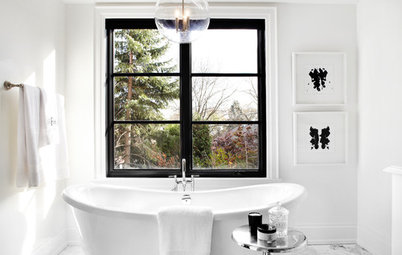
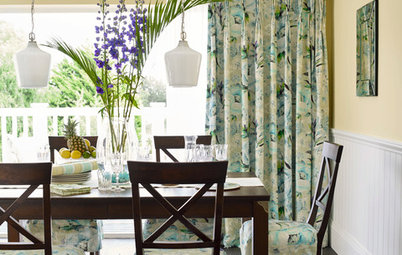
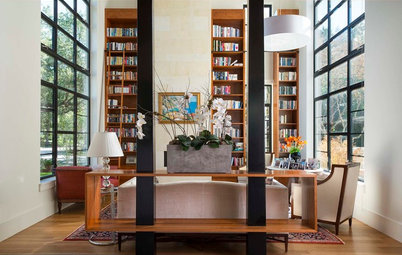
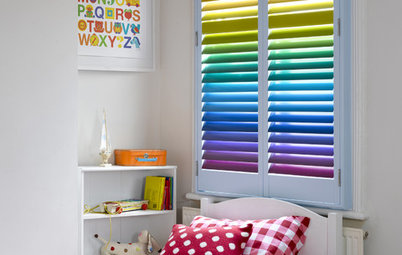
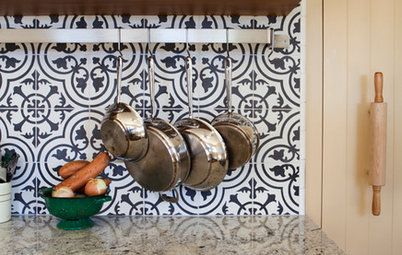
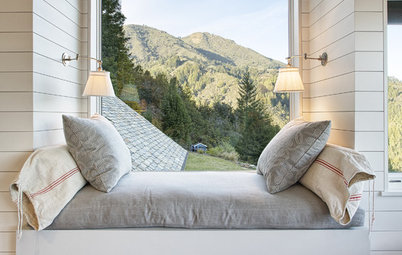
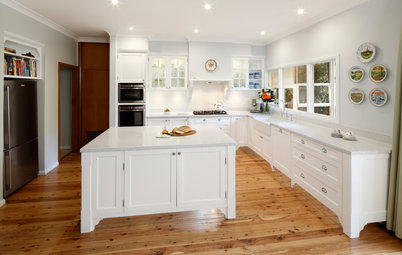
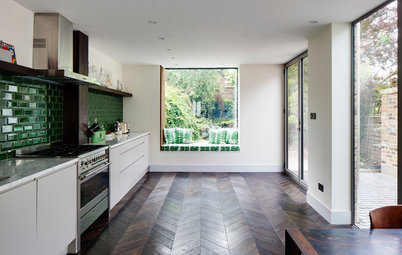
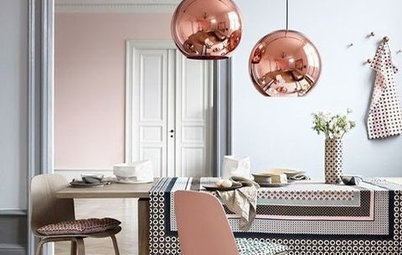
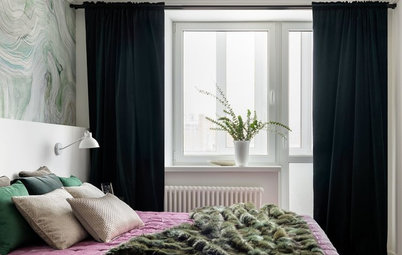
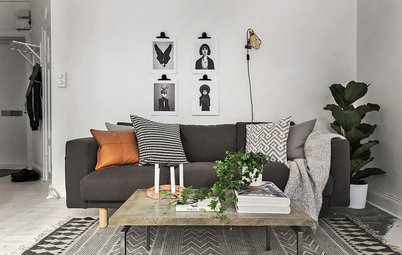
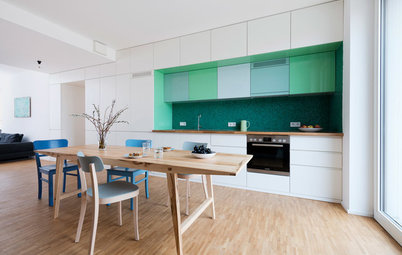
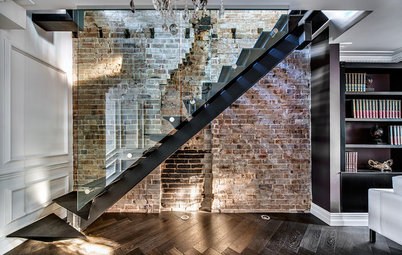
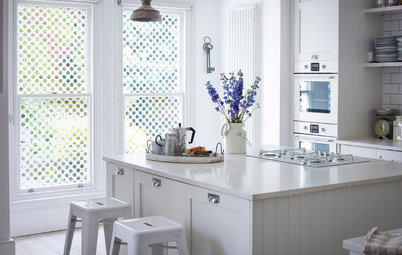
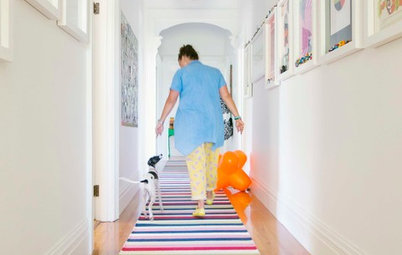
According to Fearn, the main track options include aluminium hand-bendable tracks, steel made-to-measure tracks, and PVC/plastic hand-bendable tracks. All options are available as either hand-drawn or cord-operated designs.
So which is the best for a bay window? “It depends on the shape of your bay and the weight of the curtains you’re intending to hang,” says Fearn. “For example, curtain tracks made from bendable aluminium are considered to be stronger and more stable than plastic/PVC ones. Aluminium tracks are great for bending around bays with multiple angles. However, PVC tracks flex themselves easily into shape, making them more suitable for curved or semi-circular windows.”